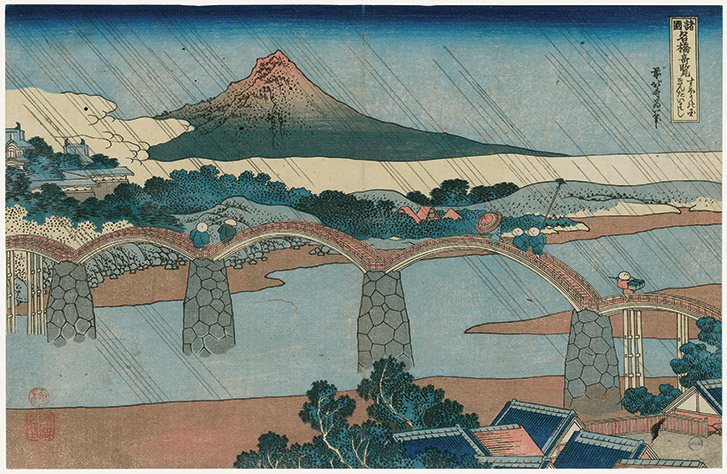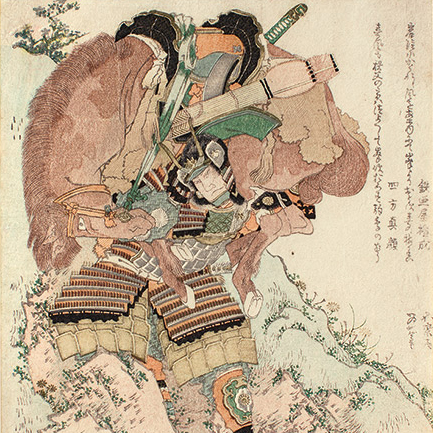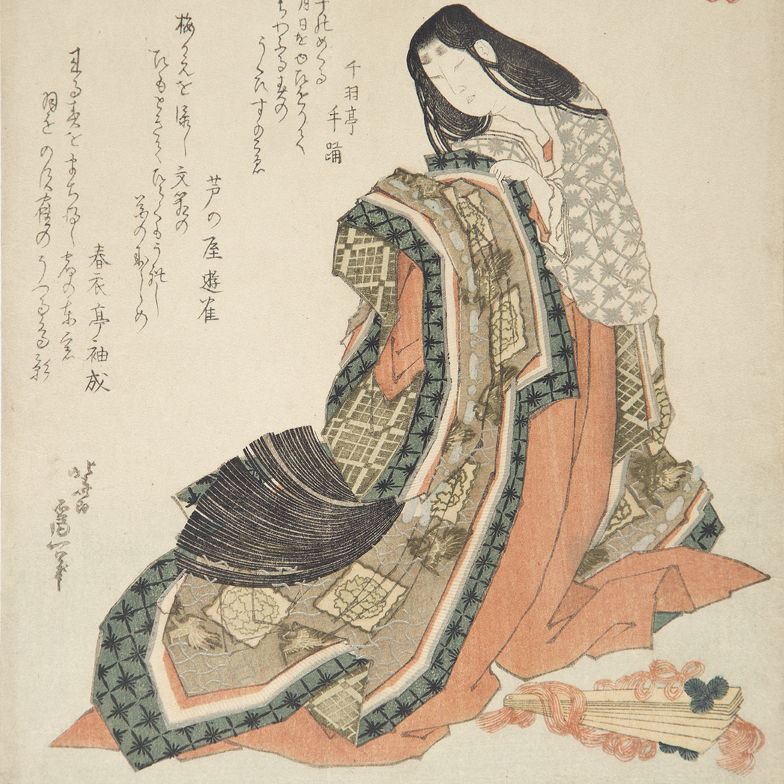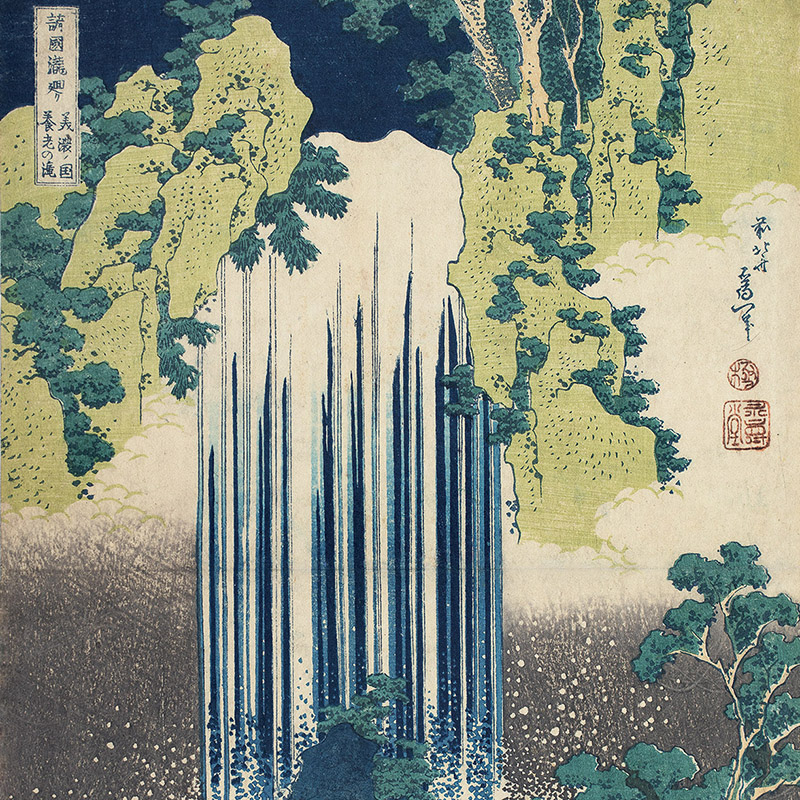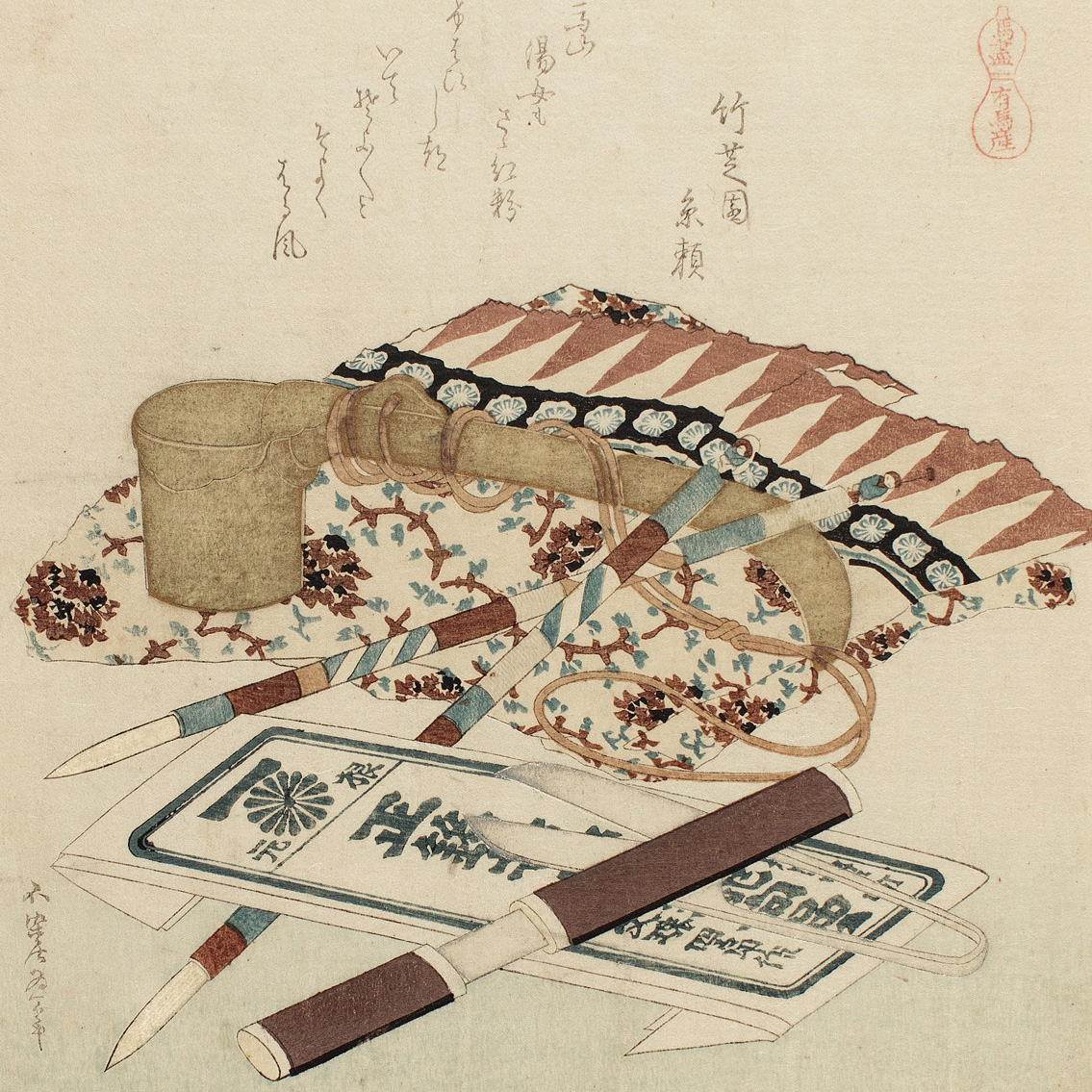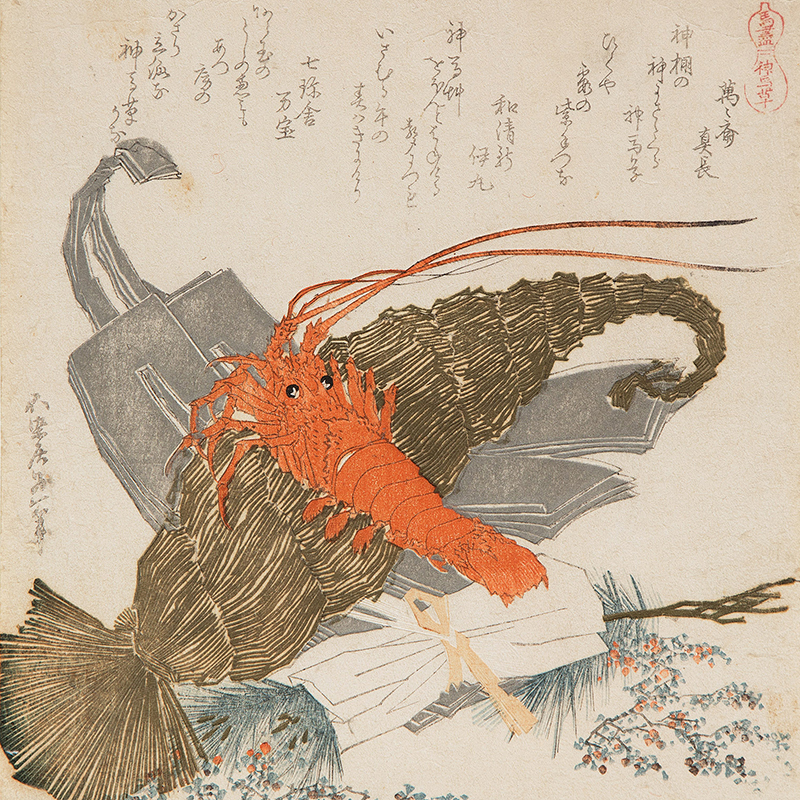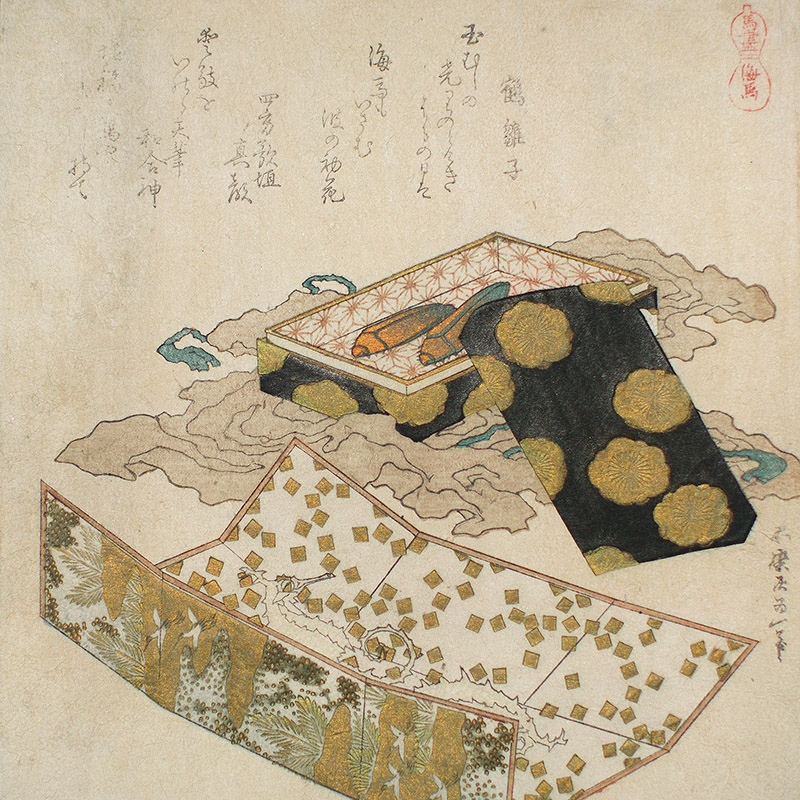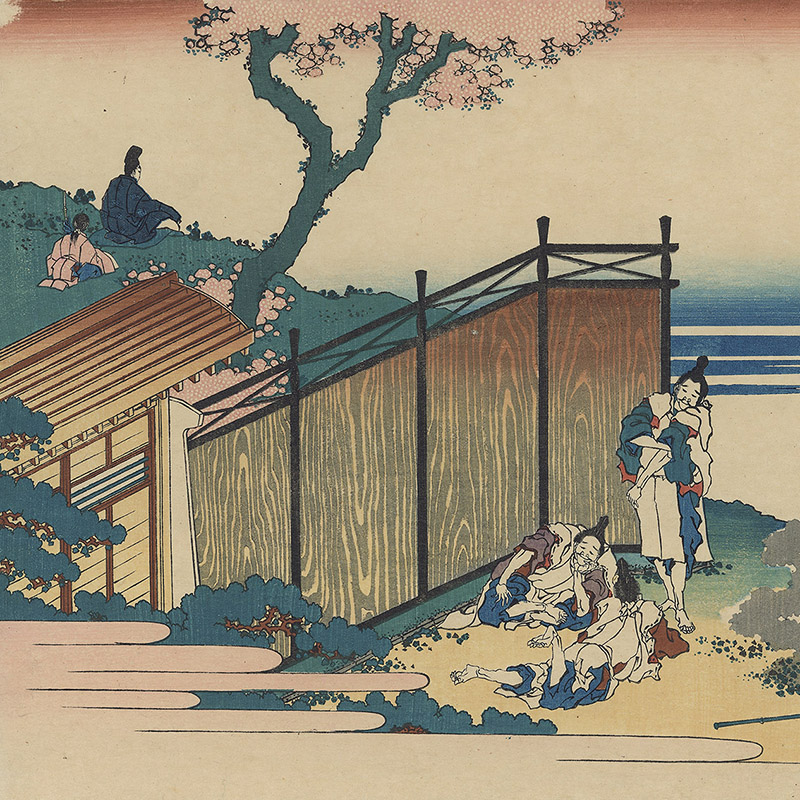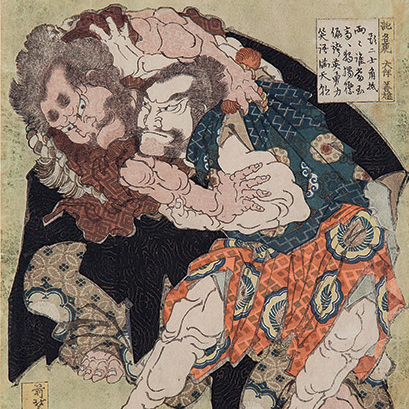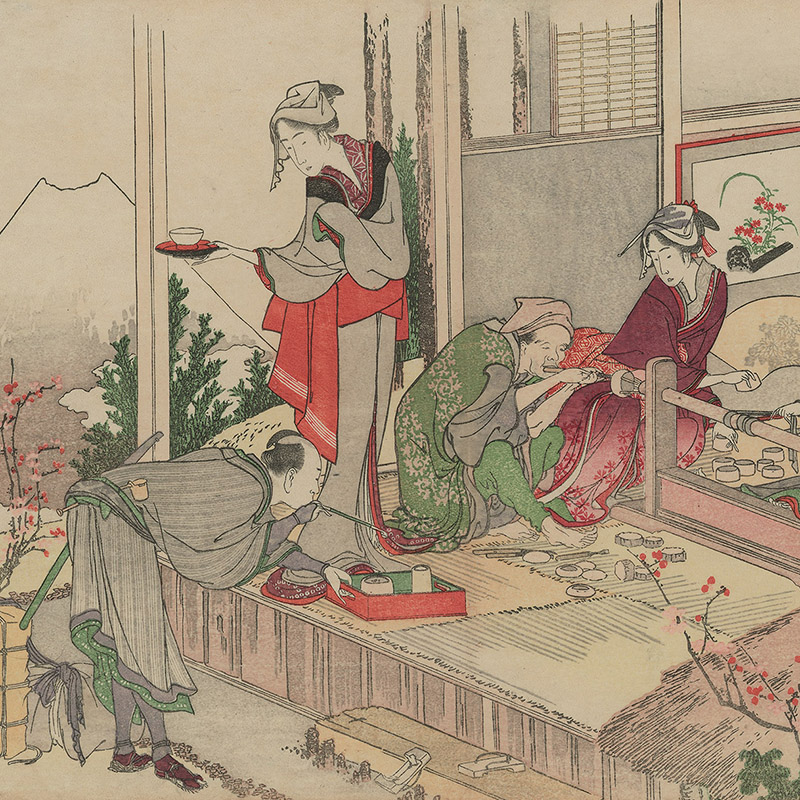Katsushika Hokusai
1760 - 1849
Suô No Kuri Kintai Bashi
c. 1834
Horizontal ȏban, mm 239 x 367
Signed: Zen Hokusai Iitsu hitsu
Publisher: Eijudō
Censorship: Kiwame
Series: Remarkable Views of Bridges in Various Provinces - Shokoku meikyō kiran
Provenance: Huguette Berès, her mark on the verso.
Fine impression, fresh colour; vertical centrefold, otherwise in very good condition.
The Kintai bridge, built of solid stone pillars, crosses the Iwakuni river in the Suô Province (Yamaguchi prefecture at present). It is also known by the name of Bridge of the Brocade Sash because its elegant shape suggests a decorative sash across the river. The bridge was originally part of the main road to the Iwakuni Castle, which we can see at the left of the composition. The bridge was originally intended for use only by samurai and their retinues and so Hokusai shows on the bridge a figure with an umbrella and two swords (prerogative of the samurai class) accompanied by his attendants.
References:
J. Hillier, Hokusai: Paintings, Drawings and Woodcuts, London, 1955, n. 66.
Gian Carlo Calza, Hokusai: Il vecchio pazzo per la pittura, Milan, 1999, catalogue of the exhibition , no. V.47.9, p. 502, illustrated p. 340.
Various Authors, Hokusai, catalogue of the exhibition at the Grand Palais, Paris 2014; cat. 368, p. 301, illustrated.
Various Authors, Catalogue of the exhibition at Museum of Fine Arts di Boston, Boston 2015; no. 24, pp. 82-3, illustrated.
Information on the master
Katsushika Hokusai, dominated the scene of the art of the Japanese print (Ukiyo-e) in the field of book illustration, drawing and painting. He was born in the Honjo district of Edo. His passion for art began at an early age; he was adopted by an illustrious family of artisans who introduced him to wood engraving. This influenced his career and at the age of 18 he entered at the studio of Katsukawa Shunso (1726-1793), who specialised in prints depicting the popular Kabuki theatre. Under the pseudonym of Shunro, around the 1780s, he got to know artists like Shigemasa (1739-1820) and Kiyonaga (1752-1815) who influenced his drawing of figures. Around 1790 he produced his first important prints which he signed Kako. He also produced fine Surimono. In 1797 he married and took the name Hokusai, becoming one of the foremost illustrators and artists of Japan. Among his most famous work are the ehon, books of images, as the 15 albums of drawings entitled Manga. The most celebrated of his prints series is The thirty-six views of Mount Fuji, early thirties. Amongst his many pupils: Shinsai, Hokuju, Hokuba, Hokkei, Shigenobu.
Other works of the master
